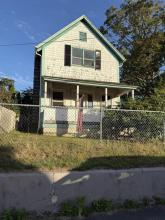Three approaches to the return to school
After months of debate and planning, Marion, Mattapoisett and Rochester have each found a way to send their youngest learners back to school full time.
Elementary schools in the Tri-Town began the academic year in a hybrid learning model, which split students’ time between the classroom and learning at home. While students third grade and above will continue to learn in a hybrid model, kindergarten, first and second graders’ only options are full in-person or full remote after each town approved plans to get the youngest learners back to the classroom full time.
While there are similarities across all the schools’ in-person learning models for kindergarten through second grade — like the utilization of gyms libraries as classrooms — each town reached a solution for full time in-person learning in its own way and at its own pace.
Following months of advocacy from a parent group called Mattapoisett Concerned, the Mattapoisett School Committee was the first to approve an in-person model for kindergarten, first and second grade.
Mattapoisett Concerned began its push to get the town’s young learners in the classroom full time back in October — two months before a plan to return was approved by the School Committee.
In the Mattapoisett in-person model, which went into effect on Jan. 19, both Old Hammondtown and Center School are being used to bring kindergarten, first and second graders back to the classroom full time. In order to maintain six feet of social distance at all times, some students have had to change classrooms, teachers and even schools.
Debate around the return to school for Mattapoisett kids revolved around communication from The Old Rochester Regional School District, which some parents claimed was not adequately transparent about plans to return children to the classroom full time. Parents repeatedly called for an explanation of what metrics would be used to trigger a return to in-person school, but the district didn’t base its decision on case count or any other singular data point.
The district still hasn’t provided any strict metric that would trigger either an expansion of in-person learning or a pivot back to remote school — though Superintendent Michael Nelson said that in-school transmission of covid is a big factor in decision making.
“We’re looking to see if an individual has transmitted to another individual — either on the bus or in the building,” he said.
Nelson said the district is focusing on communicating with parents about how the district handles covid, and how the virus has affected operations.
“I think that since the start of school, we’ve been extremely transparent on the impact of covid on our schools,” he said.
As of Feb. 11, Old Hammondtown and Center School each have just one active covid case.
Less than two weeks after Mattapoisett approved its plan, the Rochester School Committee discussed an in-person plan of its own at a Dec. 17 meeting.
Like the Mattapoisett plan, Rochester’s included the use of large classrooms and open spaces to maintain social distancing.
Measures in the plan include the use of a double-sized classroom to host one class, social distancing markers in the hallways, and utilization of the gym as an overflow room from the cafeteria to maintain six feet of distance between students.
But concerns about rising covid numbers leading into the holidays prevented the committee from making a decision at the Dec. 17 meeting, despite overwhelming support from parents on an in-person return.
Following the holidays, Rochester reached record high covid numbers, with more than 150 new cases reported in state data in January.
Despite the realization of a record spike, the Rochester School Committee met again on Jan. 21 and approved a Feb. 2 return to in-person school for kindergarten, first and second grade.
As of Feb. 11, Rochester Memorial School has two active covid cases.
Marion is the only town in the Old Rochester District which has not yet brought its youngest learners back to the classroom full time — but the school began preparing for a return in late January.
Before approving a start date, the Marion School Committee voted at a Jan. 21 meeting to begin preparing Sippican School for increased in-person learning with the idea that students would have time to get used to their new environments in the hybrid model before a full return.
To prepare for an in-person pivot, the school’s library and band room were adapted into third grade classrooms, and second grade students were moved into larger classrooms in the building. In Sippican School’s plan, all kindergarten classes will remain in place.
After the school was set up to accommodate full time learning for kindergarten, first and second grade, the Marion School Committee voted on Feb. 8 to approve a return to school on Feb. 22, right after the district’s February break.
As of Feb. 11, Sippican School has no active cases of covid leading into the return to full time classes.



.jpg)










